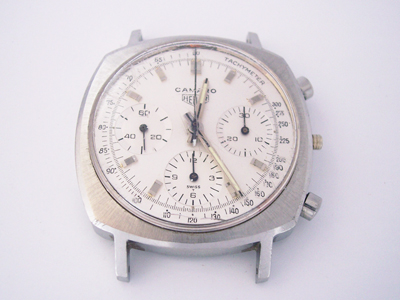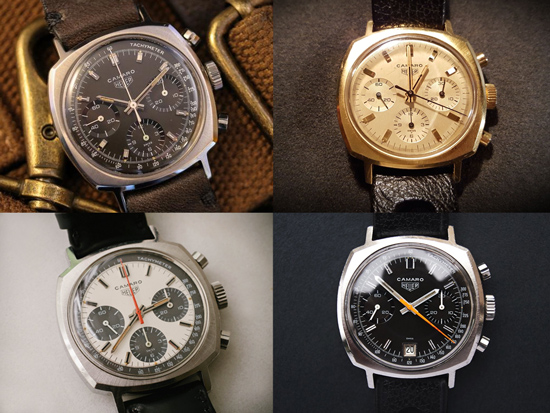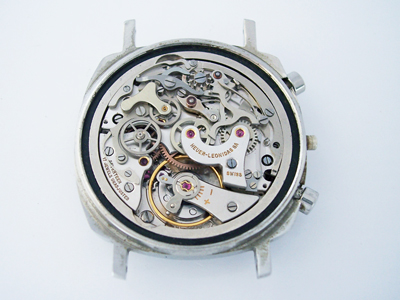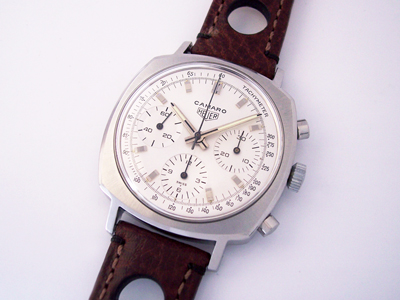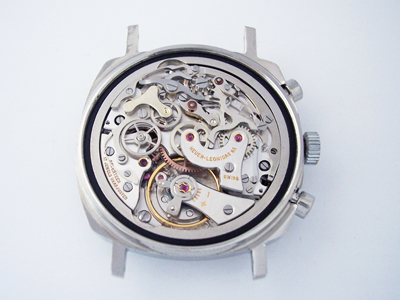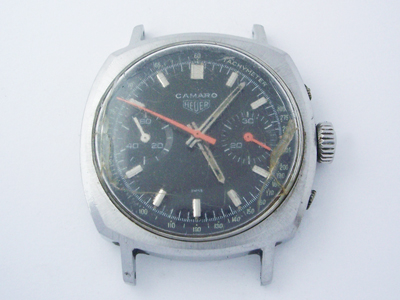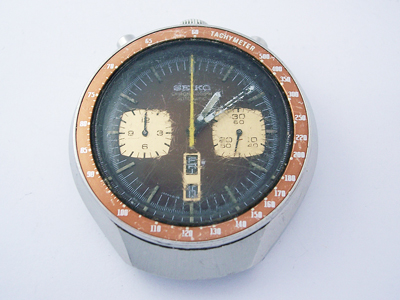Another classic vintage Heuer chronograph, this time it’s a Camaro.
(Click pictures to enlarge)
It could be argued that the Camaro is something of a hidden gem among vintage Heuer chronographs. Though it is essentially the same watch as the eternally popular Carrera, the Camaro doesn’t seem to have the same appeal among enthusiasts. Surprising really as at 37mm it’s only 1mm larger than the Carrera and the cushion shaped case makes it ‘wear bigger’ which should appeal to many given the current affinity for larger watches.
In contrast to the majority of Heuer chronographs which were named after motor racing events or circuits ie. Monaco, Carrera, Silverstone, Monza, Jarama, the Camaro was named after the Chevrolet Camaro in an attempt to appeal to US motor racing fans – the Chevrolet Camaro was the pace car at the Indy 500 at the time.
First introduced in 1968, the Camaro was the last model released before Heuer brought automatic chronographs to market in 1969. Against stiff competition from within, sales of the Camaro would I suspect have suffered and as a consequence production stopped in 1972 after a run of just 4 years.
Given that it had such a short production run there were lots of Camaro variants. The early models were all fitted with the excellent Valjoux cal. 72 and there was also a two sub-dial model fitted with the Valjoux 92. As production moved into the 1970’s the calibres were switched to the Valjoux 77xx family – V7733, V7734 (date) and V7736 (12hr chronograph).
Most models were offered with black, white or panda dials and there were also both solid and gold plated models available. Later models also had the fluted pushers seen on the Autavia chronographs rather than traditional round heads, which can be used as a good indicator as to the age and calibre that may be inside.
Here are a few examples of other models:
Getting back to the subject of this post, you may have noticed in the first picture that the watch arrived without a crown and stem, so it wasn’t known if the watch was fully functional. Opening the watch was encouraging as the movement, a Valjoux Cal. 72, was complete and in good cosmetic order with no sign of rust or damage. However, under the microscope I could see that the oils had all turned to dust so the watch hadn’t been serviced in many years.
Inserting a suitable stem and crown into the movement from another V72 chronograph, the movement started ticking right away and all the chronograph functions worked which was a good start.
There weren’t any hidden surprises this time so once a crown and stem had been sourced and fitted, the watch only needed a movement service, a thorough clean and a new crystal to bring it back to full working order.
The case had picked up a few marks over the years, mostly on the case sides and chamfered section between the brushed case top and sides. Polishing this area by hand is tricky as it’s all too easy to remove case edge definition on the sides or chamfer, but patience prevailed and it was well worth the effort in the final result.
Rich.
** Many thanks to Paul Denham for letting me feature his watch on the blog. **

